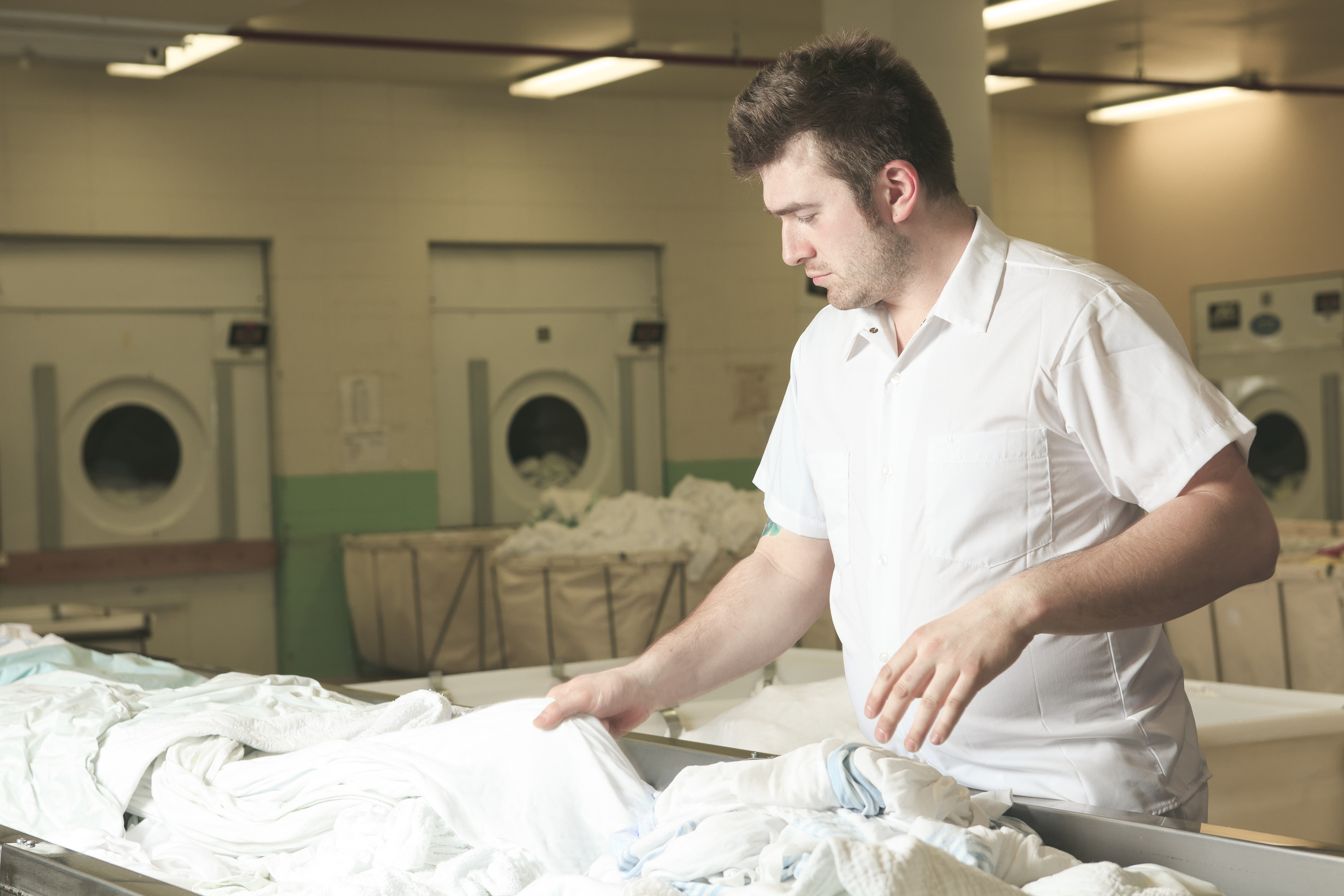
By Al Adcock, B&C Technologies —
During a hospital stay patients spend most, if not all, of their time in bed surrounded by hospital linens. Patients have more contact with gowns, sheets and blankets than anything else in the hospital. That’s why it’s important to make sure that those linens are properly cleaned, dried and transported while avoiding any cross-contamination.
During the wash process, the proper chemicals, water temperature, and mechanical action are all necessary to ensure properly cleaned goods. But healthcare laundries can go one step further by using barrier machines to keep the germs from soiled goods from re-contaminating clean goods.
The Path of Re-contamination
How does re-contamination occur? After a patient’s sheets are stripped off their bed, they are placed in a bin for contaminated linens. Then they are bagged and transported to the hospital laundry where a laundry worker removes them from a bag and places them in the washer. Standard protocol is for the worker to wear gloves to avoid personal contamination. But what about hospital surfaces? The employee is closing the washer door, selecting a wash cycle and pressing the start button on the machine. Of course the employee has more than likely also touched the front or other surfaces of the machine as well. While the gloves protect the worker from germs – nothing protects the machine. The germs from the linens have been carried across the rim of the washer during loading and the machine’s handle, cycle select buttons, stop button and other surfaces on the machine that the worker may have touched have also been exposed to germs.
Most facilities spray the areas touched by employees with disinfectant in an effort to sanitize those surfaces. Hopefully, the disinfectant is strong enough, the proper amount was used and all contaminated surfaces were sprayed, because when the worker returns at the end of the cycle to transport clean goods to the dryer, they are again touching the equipment handle and dragging the linens back over the rim to place them in a cart.
The Beauty of Barriers
Cross-contamination can be avoided by using a barrier washing machine that is designed for the sole purpose of keeping soiled and clean goods physically separated during the wash process.
For very large hospital laundries the best type of barrier machine would be a tunnel or continuous batch washer. These washers have soiled linens placed in one end of a long tunnel and they are moved through the washer by an Archimedes screw. This screw separates the load into batches. Water and chemicals enter the machine from the other end, in the opposite direction of the goods so every time the laundry goes into the next pocket cleaner and cleaner water is used.
Smaller laundries, or smaller loads, use pony barrier washers. These machines are made to be built in a wall with a clean laundry room on one side and soiled linen room on the other. The machine has two doors – one on the clean side and the other on the dirty side. The laundry is loaded on the dirty side, the door is closed, program selected and start button pressed. Once the cycle is finished running the workers on the clean side of the laundry remove the laundry from the washer. No germs from the soiled laundry have touched this side of the machine.
Only one door can be opened at a time so when a worker is loading dirty laundry on the soiled side, the door cannot be opened on the clean side allowing germs to contaminate the clean room. In a best case design, the air pressure in the clean side of the laundry is higher preventing any air from the soil side from reaching the clean side.
Another option for producing germ-free hospital linens would be the addition of an ozone system which would help sanitize the linen. But whatever method is used, hospital laundry employees should be constantly aware of cross-contamination possibilities and strive to avoid them.
Photo: (c) Lopolo/CanStockPhoto.com
About the Author
Al Adcock is an industry veteran with over 20 years of experience, working for different manufacturers in many different capacitie s before helping launch B&C Technologies in 2000. He has played an instrumental role in the design of several machines on the market before moving to sales in 2013.
s before helping launch B&C Technologies in 2000. He has played an instrumental role in the design of several machines on the market before moving to sales in 2013.
Based in Panama City Beach, FL, B&C Technologies is a family owned customer focused company that builds the highest quality laundry equipment at the most competitive prices. All B&C equipment relies on engineering driven designs to produce machines that consistently perform and constantly produce.













